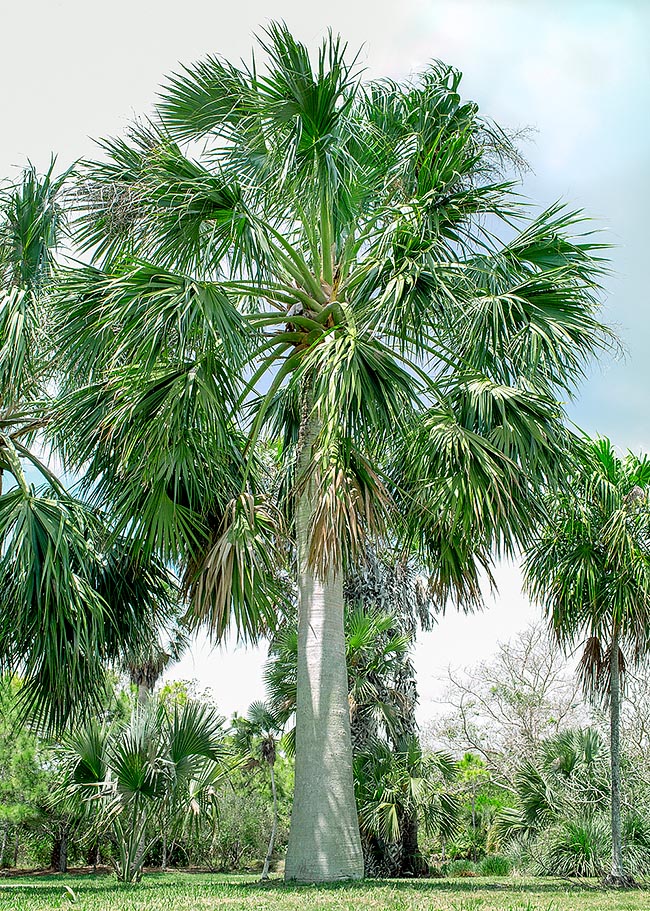Family : Arecaceae

Text © Pietro Puccio

English translation by Mario Beltramini
The species is native to Cuba, Dominican Republic and Haiti, where it grows in the savannahs and in the secondary dry forests up to about 1000 m of altitude.
The etymology of the genus is unknown, having not been specified by the author, the French botanist Michel Adanson (1727-1806); the Latin specific name “domingensis” = of domingo, refers to the capital, Santo Domingo, of the Dominican Republic, near which the type species has been found.
Common names: Hispaniola palm, Hispaniola palmetto (English); latanier-chapeau (Haiti); palma cana (Dominican Republic).

Native to savannahs and dry forests of Cuba, Haiti and Dominican Republic, the imposing Sabal domingensis reaches the height of 16 m with elegant smooth stems of 50-60 cm. Good resistance to cold up to -8 °C © Giuseppe Mazza
The Sabal domingensis Becc. (1908) is an unarmed species, monoecious, with solitary stem, up to 16 m tall and 50-60 cm of diameter, columnar, of grey color, smooth, but close to the top where remain the residues of the foliar bases forming a typical cross-weave.
The leaves, on a 1-1,6 m long petiole, are costapalmate, divided in 60-90 segments, up to 1,2 m long, united at the base per 1/2-1/3 of their length and bifid at the apex, arranged on slightly different angles, of dark green color with bluish reflections; from the axil of the segments depart whitish filaments.
Inflorescences between the leaves, of the same or bigger length, arcuate, with 3 orders of ramifications and tiny white fragrant flowers with trilobed tubular calyx, trilobed tubular corolla, 6 stamina, trilobed ovary and stigma.
Pyriform fruits, of 1,1-1,4 cm of diameter, black when ripe, containing only one globose seed, flattened on the extremities or concave, of 0,8-1 cm of diameter.
It reproduces by seed, previously kept in water for 3 days, in draining loam maintained humid at the temperature of 26-28 °C, with germination times of 2-4 months.
Imposing species and easy to cultivate, often mistaken with the Sabal causiarum, from which differs for the bigger fruits, that would deserve a major diffusion thanks to the relatively fast growth and its adaptability to various conditions of climate and of soil.
Of remarkable landscaping effect, as isolated specimen as well as in rows on the margins of the alleys, it may be employed in the tropical and humid subtropical regions and in the semiarid ones, due to its resistance to drought, as well as in the warm temperate ones, where, when adult, may resist values of temperature up to about -8 °C, if exceptional and short lasting.
It requires full sun and can grow in an ample variety of soils, provided draining, and bears the strong winds.
The leaves are utilized as cover of rural dwellings and for fabricating hats, mats, baskets, brooms and other handicrafts.
Synonyms: Sabal neglecta Becc. (1908).
